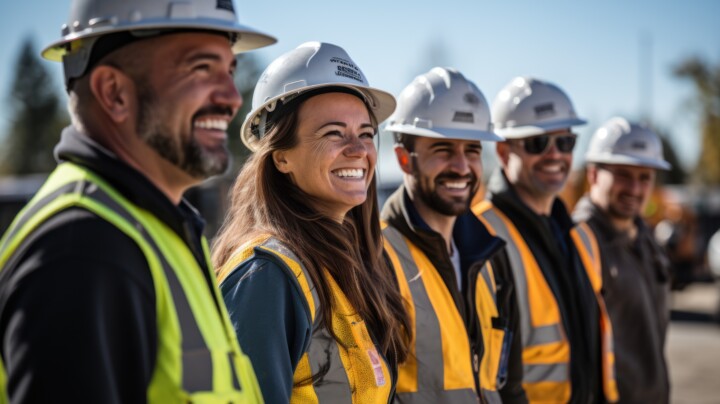


Guest blog from Steven Harris, a widely respected global risk and sustainability leader who has worked as a drilling contractor, rig inspector and operator on hundreds of oil rigs.
April 2023 marks the thirteenth anniversary of the BP Deepwater Horizon oil spill, the largest maritime spill in history that killed 11 workers aboard the drilling rig. The tragedy was a huge catalyst for change within the oil and gas industry that saw oil slicks cover nearly 60,000 square miles of ocean, and crude washed up along an estimated 4,500 miles of shoreline.
The pause that proceeded gave the industry the much needed reflection demanded to realise it had regressed to the point of forgetting the key lessons from the 167 lives lost at Piper Alpha. This time at the cost of another 11 irreplaceable souls.
While the industry entered a period of mourning that, to a degree, still exists today, I was working on a Transocean drilling rig in the West of Shetland on the UK’s Continental Shelf (UKCS), also drilling for BP. I can recall vividly the moment when our rig was directed to stop work and gather in the galley to learn of the tragedy from our steadfast Offshore Installation Manager (OIM), who could do nothing to lessen the blow. It hit us all very hard.
The offshore life is difficult to describe. As a rig-based community we were more akin to a family of brothers than a collection of colleagues. That principle stretched throughout all of Transocean, and when the OIM said events were still unfolding and there were casualties, and almost certainly fatalities, we were stunned into silence. Silence is not something associated with oil rigs. We are a noisy bunch.
What came next?
There have been countless subsequent investigations into the events onboard the Deepwater Horizon, both official and unofficial. What follows is based on the findings of the United States Chemical Safety and Hazard Investigation Board, as well as my own knowledge gained from 17 years living and working in the energy industry, the majority in connection with drilling rigs.
One of the few things that we know for certain is there was not a single cause but rather a catalogue of individual errors, some of which related to supply chain issues that all possessed degrees of escalation potential.
When they occurred in the sequence that transpired on the 29 April 2010, they unified as a single cumulative catalyst that exponentially increased the hazard burden that overwhelmed those on the rig and caused a catastrophic outcome.
Two of the supply chain issues involved the cement used to seal the well and the blowout preventer (BOP):
These specific failures highlight the importance of clear accountability and oversight throughout the supply chain, paired with robust quality control processes and regular inspections and testing. These thoughts were mirrored by a UK inquiry who recognised the need for independent verification of well design, well equipment and safety and environmental critical elements (SECE) in the offshore oil and gas industry. This has been written into law since 2015 in the hope to prevent such an event in the UKCS.
This blog outlines two of the prevalent technical factors involved in what could have been preventable circumstances, both of which are intrinsically linked to the supply chain. There were several more technical, human, and organisational issues (some of which we will never know) that became interdependent in a sophisticated domino effect that caused death, injury and one of the worst oil spills in history.
In my experience, supply chain risks are rarely fully understood. Organisations in every industry struggle to establish suitably diligent and object data-driven oversight that is necessary to make decisions that can reduce the risk of disruptive events to ‘as low as reasonably practicable’ (ALARP).
In summary, it’s this space that Anthony Hanley and his team at Alcumus become incredibly important to us all. They provide a level of guidance, direction, verification, and assurance over all the moving parts that helps business leaders ensure that the risk of unplanned events is always ALARP.
Steven Harris
Managing Director
Integrity HSE
www.integrityhse.com
—————————————————————————————
This blog is dedicated to the 11 that were lost, and the loved ones they were forced to leave behind:
Jason Anderson, 35, Midfield, Texas. His widow said he loved spending time with his “rig brothers.”
Aaron Dale Burkeen, 37, Philadelphia, Mississippi. He left behind a wife, and two children.
Donald “Duck” Clark, 49, of Newellton, Louisiana. Married for 20 years and left behind four children.
Stephen Ray Curtis, 40, Georgetown, Louisiana. Left behind a wife, a son, a daughter and grandchild.
Gordon Jones, 28, Baton Rouge, Louisiana. Left behind a wife, days before a sixth wedding anniversary.
Roy Wyatt Kemp, 27, Jonesville, Louisiana. He left behind a wife, and two children.
Karl Kleppinger Jr., 38, Natchez, Mississippi. He left behind a wife and a son.
Keith Blair Manuel, 56, Gonzalez, Louisiana. Known on the rigs as Papa Bear, he left a large family.
Dewey Revette, 48, of State Line, Mississippi. He left behind his wife and two daughters.
Shane Roshto, 22, Liberty, Mississippi. He left behind a wife and a son.
Adam Weise, 24, Yorktown, Texas. Growing up without a father, he was the youngest of four children.
About Steven Harris
A widely respected global risk and sustainability leader that was voted by HSE People and the Safety and Health Practitioner (SHP) journal as one of the Top 10 and Top 18 Global HSE Influencers of 2022. Steven is a published author (The Little Book of Leadership), an in-demand content provider and frequent webinar host for several membership bodies. Steven also lecturers for Robert Gordon University on their MSc in Drilling and Well Engineering, a university from which he also holds an MSc. Steven is also a regular podcast guest where he routinely talks about strategy, leadership, risk, resilience, performance and how to effectively identify, quantify, address, and learn from challenges.
Steven’s experience stems from holding senior leadership and operational roles within 50+ international projects bridging the energy spectrum from oil & gas to renewables: Africa; Caspian Sea; Mediterranean; Europe; Middle East; North Atlantic Ocean; North Sea (all sectors); South America & South Atlantic Ocean.
Steven is a Fellow of International Institute of Risk & Safety Management (IIRSM); a Fellow of the Institute of Leadership & Management (ILM); a Chartered Fellow of the Chartered Management Institute (CMI) and a past Chartered member of the Institution of Occupational Safety & Health (IOSH).